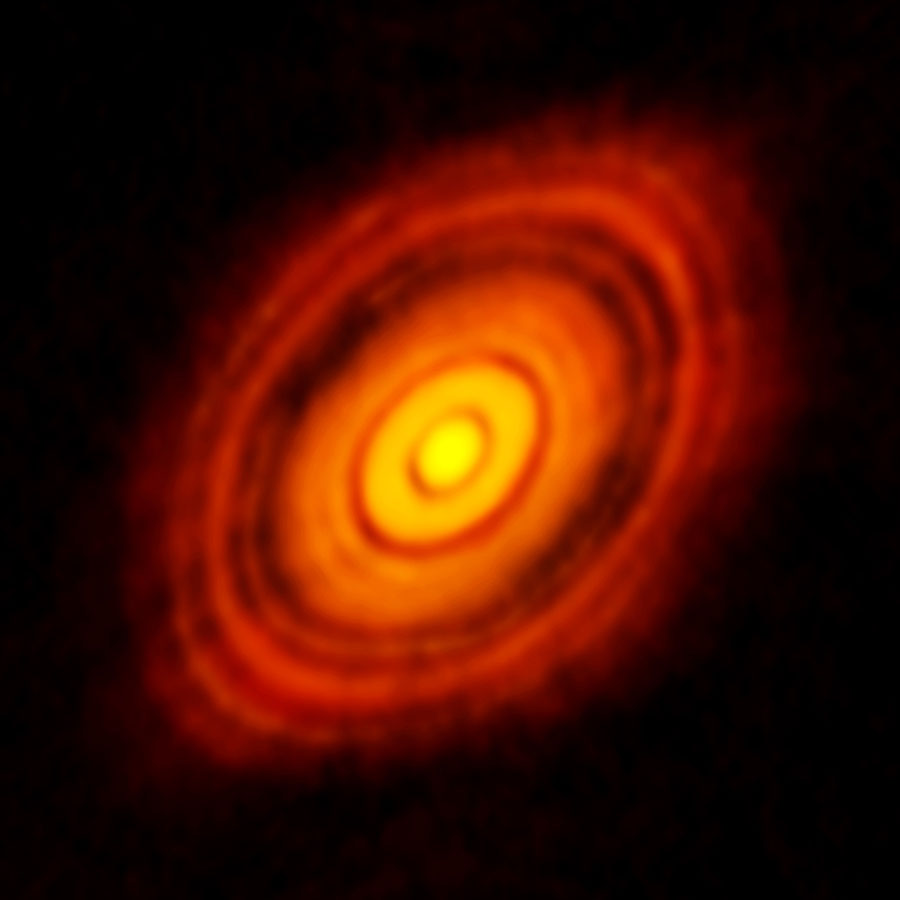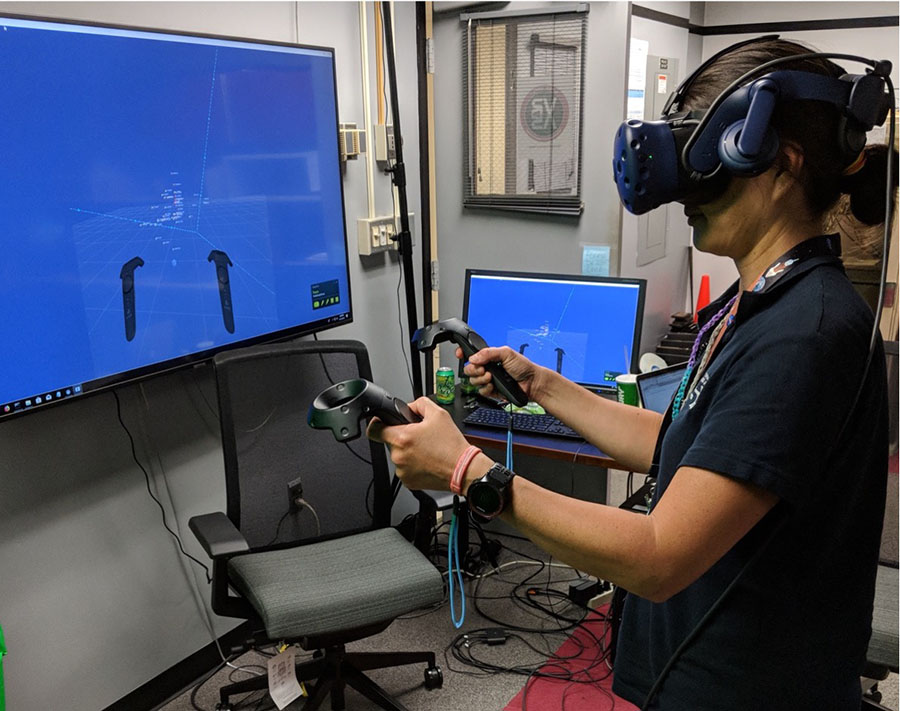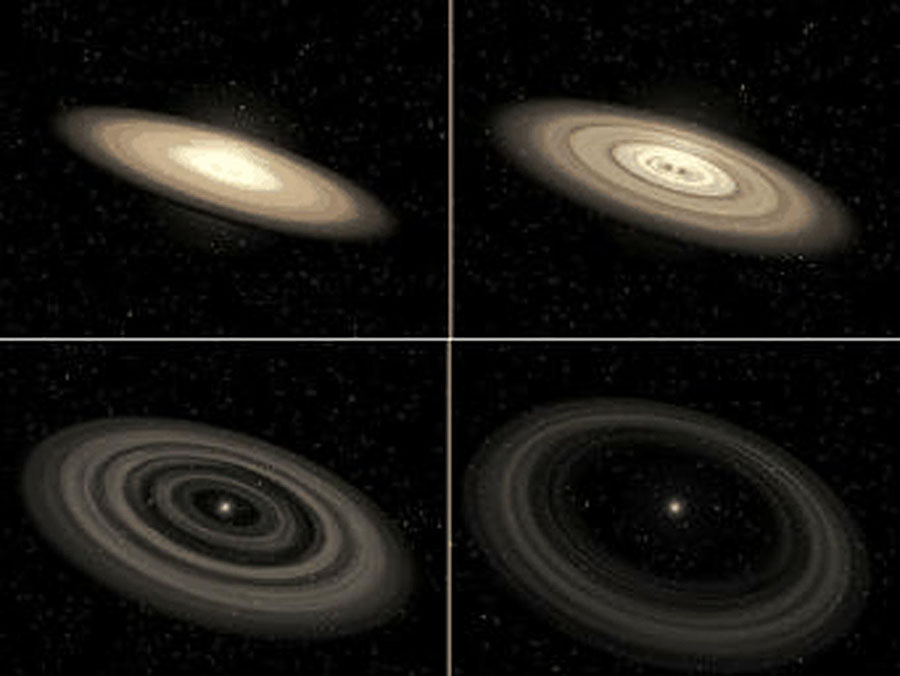Disk Detective, a citizen science project dedicated identifying planet-forming disks around young stars, reports their latest results at the American Astronomical Society meeting.
The sheer wealth of data current missions generate can overwhelm professional astronomers, so in the past decade, research groups have increasingly relied on citizen scientists. One project that calls upon the general public's keen eyes and enthusiasm is Disk Detectives. Here, citizen scientists explore the sites of planet formation around stars, leading to results reported at the 240th meeting of the American Astronomical Society in Pasadena, California.
Exoplanets in the Making
Planets form in protoplanetary disks, frisbee-like structures of swirling gas and dust around infant stars; once the evolving stars blow the gas away, debris disks of dust and small bodies remain. (We have our own debris disk, the Kuiper Belt, and we see the leftover dust from the formation of our solar system in the form of the zodiacal light.)

ALMA / ESO / NAOJ / NRAO
NASA’s Wide-Field Infrared Survey Explorer (WISE) has led to the discovery of tens of thousands of disk candidates among 2 billion objects awaiting classification. But how does a research group with limited resources and time go about scouring through reams of data for suitable candidates?
Enter the Disk Detective
Back in 2011, Marc Kuchner (NASA Goddard Space Flight Center) interviewed Zooniverse principal investigator Chris Lintott for a book. Inspired, Kuchner proposed a project to search for debris disks, which launched in 2014 and ran until 2019.
Now, after a brief hiatus, Disk Detective 2.0 is back online with more data from WISE, as well as data from the European Space Agency’s Gaia mission and the Panoramic Survey Telescope and Rapid Response System.
Disk Detectives identify disk candidates by searching for sources displaying more infrared light than expected, the signature of warm gas and dust around the star . The citizen scientists not only pluck out viable disk candidates, but also weed out false positives that come from noise and image artifacts.
More than 30,000 members of the public have contributed to the project, including 107 "superusers." Together, these detectives have identified more than 50,000 disk candidates. “In other words, our disk candidates amount to about one for every 40,000 sources WISE has seen,” Kuchner says.
But the Disk Detective are churning out so many candidates, that those data can in turn be overwhelming. So, a team led by Susan Higashio (NASA Goddard Space Flight Center) used custom virtual reality software, PointCloudsVR, developed by Thomas Grubb and designed by Matthew Brandt (also at NASA GSFC) to allow scientists to explore the data in a novel way.

NASA / Matthew Brandt
In particular, Higashio targeted associations of stars that all originated from the same star-forming region, and thus all have the same age. Studying disks in such associations help nail down the timeline of planetary formation.
“In virtual reality, you're immersed in the scene where it's easier to see the positions of stars, and you can zoom in and pan out and rotate the scene to get a view from 360 degrees,” says Higashio, lead author on the team’s paper to appear in the Astrophysical Journal. “It can be easier to spot these groups.”

NASA / JPL-Caltech
Using this technology, Higashio and colleagues identified 10 Disk Detective targets that belonged to stellar associations, which in turn allowed the researchers to pinpoint the stars' ages to between 18 and 133 million years old. “Now we can place them in a time sequence, and they become part of the story of how disks form and evolve and how planets form and evolve,” says Kuchner.
Join in the Fun
Among other exciting discoveries from the Disk Detective project is an oddball star — its disk appears to have way too much dust for its age — and a new young stellar group of faint, M dwarfs. Citizen scientist Lisa Stiller says, “It's exciting that we could use virtual reality to help evaluate the motions of the stars over time and in multi-dimensions.”
You can join the team at the Disk Detective website. All citizen scientists who research disk candidates in the scientific literature are included as coauthors on journal papers. According to Kuchner, some have read up on thousands of stars in the process. Stiller invites everyone to get involved in the fun of participating in cutting-edge science: “We welcome others to join Disk Detective and help find stars that have a disk!”
You can also check out other NASA Citizen Science projects.
 1
1









Comments
Rod
June 30, 2022 at 12:27 pm
Thanks for the report here. I did review some of the site. I use this site for finding disc properties and sizes, https://www.circumstellardisks.org/index.php
It would be good to show various disc sizes, estimated disc masses, and diameters in AU.
You must be logged in to post a comment.
You must be logged in to post a comment.